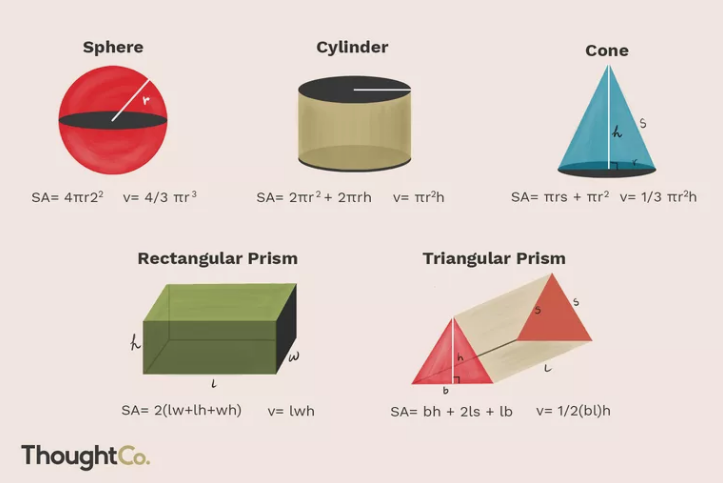im.g.5.3.Solids of a Revolution

Using surface #3, in red, plot the points to make a rectangle with vertices at (0,0), (0,2), (3,2) and (3,0). 1a. Calculate the area of the region (2-D) formed.
1b. Use the slider to draw the solid formed by rotating about the x axis. What shape is formed?
1c. Calculate the volume of the solid formed.
Now deselect surface #3 and select surface #4. Again plot the vertices (corners) of the rectangle at (0,0), (0,2), (3,2) and (3,0). Use the slider to make this figure. 1d. What is the volume of this solid?
1e. Compare the volumes in parts (d) and (c) above. Explain why these volumes are different.
2. Again, with surface 4 selected, push the slider to the left to hide the 3-D figure. Plot the vertices of the quadrilateral to be at (0,0), (2,0), 2(3) and (0,5) (so your last point must be along on of the sides). Describe the figure you predict will be created by rotating this about the y-axis.
2a. Again, with surface 4 selected, push the slider to the left to hide the 3-D figure. Plot the vertices of the quadrilateral to be at (0,0), (2,0), 2(3) and (0,5) (so your last point must be along on of the sides). Describe the figure you predict will be created by rotating this about the y-axis.
2a. Again, with surface 4 selected, push the slider to the left to hide the 3-D figure. Plot the vertices of the quadrilateral to be at (0,0), (2,0), 2(3) and (0,5) (so your last point must be along on of the sides). Describe the figure you predict will be created by rotating this about the y-axis.
2b. Now rotate the figure by moving the slider. You can also put your mouse on the figure and drag it to move the 3-D location to see it better. You should see what looks to be like a grain silo, or a composite of a cylinder and a cone. Calculate the volume of this 3-D composite figure.
3a. For our last part, deselect figure 4 and again select figure 3. Again set the slider to the left. This time plot the points of a triangle: (0,0), (0,0) (0,2) and (4,2). This figure will be rotated about the x-axis. In your head, can you predict what it will look like. Try moving the slider and check what you thought. Now, describe in sentences how you would go about calculating the volume of this figure. Then calculate it.